(** Update: There has since been a Tacx Flux S In-Depth Review. Follow the link for the most up to date information**)
Last week at Interbike, Tacx announced the Flux S, making it the second Flux trainer announced in almost as many months. The first Flux trainer was announced this past summer at Eurobike, the Flux 2. The Flux 2 was designed to be a beefier upgrade to the original Flux trainer that came out two years ago. It added a number of internal specs including accuracy and the ability to simulate steeper grades for heavier riders.
So now you might ask “what’s the Flux S?” Well, in one sentence or less it’s basically a rebranded Flux 1 that has better support for long derailleur cages. And some internal goodness. Oh, and it’s $150 cheaper now. And one more thing: Unlike the Flux 2, it’s available now.
I was able to poke at it during Interbike, and will definitely dive deeper into it later this fall. In the meantime, here’s what you need to know about the Flux S.
The Tech Specs and Changes:
Let’s be clear about this, the Flux S smart/interactive trainer is nothing more than an original 2018 Flux 1 with different legs. But is it really that simple? Not entirely. As a Facebook relationship status might say: It’s complicated.
See, when I use the term ‘2018 Flux 1’, that in itself is confusing. As there’s actually a substantial difference internally between an original ‘2016 Flux 1’, and a new 2018 Flux 1. Even after that clarification it can remain confusing, as a 2018 Flux 1 manufactured in January will vary in comparison to one made in June 2018. I say June, because that’s when most of the changes were incorporated into the product line. And now, finally, the original Flux model will be discontinued, likely as making way for the Flux S. The product you’re actually interested in today.
Like most products, over time the manufacturing line has quietly introduced changes that make usually minor and largely unseen changes. In the case of the Flux 1 which got off to a rocky start two years ago with manufacturing quality issues, there were a slew of changes made early in the cycle. Again, mostly related to QA issues in the manufacturing process to ensure the product was produced as actually designed.
However, this past spring Tacx started implementing a handful of changes into the Flux 1 units that would eventually serve as the basis for not just the Flux S but also the Flux 2 as well (which isn’t set to ship for a bit longer). Specifically, the following mechanical changes were done:
– Improved internal tension roller (which results in slightly improved road feel and accuracy during sprints)
– Improved internal alignment (nothing meaningful to consumers, purely manufacturing)
Like I said, not much in the grand scheme of things you can write on the outside of a new product box. These were applied to the Flux 1 inline over the course of spring.
However, there’s one change that’s coming exclusively to the Flux S:
– Long derailleur cage support (they dropped the legs lower so that it fits)
And that’s it. With that change, you’ve gone from Flux 1 to Flux S.
Oh, and the price dropped. Back in June they dropped the price to $799 for the Flux 1, whereas now we saw at Interbike the Flux S has been dropped even further to $749USD/599EUR (also: 999CAD, 549GBP, 725CHF, 5919NOK, 4619KK).
I do a quick walk-through of the trainer here at Interbike in this nice and efficient video:

Now, if you aren’t familiar with a Flux trainer to begin with, I’ve probably gotten a bit off-track. Essentially, the Flux series is a smart/interactive trainer that works with virtually all apps out there (Zwift, TrainerRoad, Rouvy, SufferFest, etc…). It changes the resistance based on what the app sends it, such as 10% grade or 325 watts. The Flux S maxes out at a 10% grade, which is normal for this price point, and maxes out at 1,500w. If you’re unsure whether or not you can put out 1,500w…the answer is likely no.
They aren’t silent, but they aren’t loud either. There’s no sound differences between the Flux S and Flux 2. The main differences between the Flux S and Flux 2 are that the Flux 2 (at $150 more) can simulate 16% grades and has an increased simulated flywheel mass (32.1kg vs 24.7kg). Also, it can resist 2,000w versus the 1,500w. The Flux 2 provides thru-axle adapters in the box whereas on the Flux S you need to pick them up separately ($29-$39). Power accuracy for the Flux S is +/- 3%, versus +/- 2.5% for the Flux 2. And finally, the Flux 2 has a lower resistance floor, so it can better simulate low-speed climbs than the Flux S.
Both Flux 2 and S trainers connect over ANT+ & Bluetooth Smart like before. They both support the following transmission types:
ANT+ FE-C Trainer Control
ANT+ Power Meter Broadcast (with cadence/speed baked in)
ANT+ Cadence/Speed Sensor Broadcast (standalone)
Bluetooth Smart Trainer Control
Bluetooth Smart Power Meter Broadcast (with speed/cadence baked in)
Bluetooth Smart Cadence/Speed Sensor Broadcast (standalone).
Both trainers require that they be plugged in (unlike some of the other Tacx range which can operate in the middle of a corn-field sans-power). Both have LED’s on the side of the trainer so you can double-check connectivity status. And neither have foldable legs like some other trainers on the market. Though, I find the Flux series fairly ‘skinny’ in terms of footprint compared to some other options.
How does it stack up:
Now at this point your head may be spinning as to all the differences, not just to the Flux S, but also other trainers in this price point. It is here that you see the genius of the Tacx move. Knowing that they can’t really compete on the sound of silence front with the Wahoo KICKR CORE, they’ve dropped the price even further than what the Tacx Flux 1 was originally at. Not only that, it’s actually available now – whereas the KICKR CORE will likely continue to be heavily back-ordered throughout the fall (if you didn’t place an order earlier). It also undercuts on price the slightly updated 2018 Elite Direto (which now includes a riser block and slightly increased accuracy claims).
Here’s how they all stack up. Keeping in mind that minor nuances like ‘improved internals’ don’t really show up on this comparison chart. Gotta draw the line somewhere:
| Function/Feature | Tacx Flux S | Tacx Flux 2 | Elite Direto (2018) | Wahoo Fitness KICKR CORE |
|---|---|---|---|---|
| Copyright DC Rainmaker - Updated November 13th, 2023 @ 10:43 am New Window | ||||
| Price for trainer | $749USD | $899 | $849 ($799 for 2017 models) | $899 |
| Trainer Type | Direct Drive (no wheel) | Direct Drive (no wheel) | Direct Drive (No Wheel) | Direct Drive (No Wheel) |
| Available today (for sale) | YEs | YEs | Yes | Yes |
| Availability regions | Global | Global | Global | Global |
| Wired or Wireless data transmission/control | Wireless | Wireless | Wireless | Wireless |
| Power cord required | Yes | Yes | Yes (no control w/o) | Yes |
| Flywheel weight | 6.7kg (simulated 25kg) | 7.6kg (simulated 32.1kg) | 4.2KG/9.2LBS | 12.0lbs/5.44kgs |
| Includes cassette | No | No | No | No | Resistance | Tacx Flux S | Tacx Flux 2 | Elite Direto (2018) | Wahoo Fitness KICKR CORE |
| Can electronically control resistance (i.e. 200w) | Yes | Yes | Yes | Yes |
| Includes motor to drive speed (simulate downhill) | No | No | No | No |
| Maximum wattage capability | 1,500w @ 40KPH | 2,000w @ 40KPH | 1,400w @ 40KPH / 2,200w @ 60KPH | 1800w |
| Maximum simulated hill incline | 10% | 16% | 14% | 16% | Features | Tacx Flux S | Tacx Flux 2 | Elite Direto (2018) | Wahoo Fitness KICKR CORE |
| Ability to update unit firmware | Yes | Yes | Yes | Yes |
| Measures/Estimates Left/Right Power | No | No | 9EUR one-time fee | No |
| Can directionally steer trainer (left/right) | No | No | No | No |
| Can simulate road patterns/shaking (i.e. cobblestones) | No | No | No | No | Motion | Tacx Flux S | Tacx Flux 2 | Elite Direto (2018) | Wahoo Fitness KICKR CORE |
| Whole-bike physical gradient simulation | No | No | No | With KICKR CLIMB accessory |
| Can rock/tilt side to side (significantly) | No | No | No | No | Accuracy | Tacx Flux S | Tacx Flux 2 | Elite Direto (2018) | Wahoo Fitness KICKR CORE |
| Includes temperature compensation | Yes | Yes | N/A | Yes |
| Support rolldown procedure (for wheel based) | Yes | Yes | Yes | Yes |
| Supported accuracy level | +/-3% | +/-2.5% | +/- 2% (Sept 2018 models, +/- 2.5% for earlier models) | +/- 2% | Trainer Control | Tacx Flux S | Tacx Flux 2 | Elite Direto (2018) | Wahoo Fitness KICKR CORE |
| Allows 3rd party trainer control | Yes | Yes | Yes | Yes |
| Supports ANT+ FE-C (Trainer Control Standard) | Yes | Yes | Yes | YEs |
| Supports Bluetooth Smart FTMS (Trainer Control Standard) | Yes | Yes | Yes | YEs |
| WiFi or Ethernet | No | No | Data Broadcast | Tacx Flux S | Tacx Flux 2 | Elite Direto (2018) | Wahoo Fitness KICKR CORE |
| Transmits power via ANT+ | Yes | Yes | Yes | Yes |
| Transmits power via Bluetooth Smart | Yes | Yes | Yes | Yes |
| Supports Multiple Concurrent Bluetooth connections | No, just one | No, just one | No, just one | Yes, 3 Concurrent |
| Transmits cadence data | Yes | Yes | Yes | Yes |
| Bridging or re-transmission | No | No | Purchase | Tacx Flux S | Tacx Flux 2 | Elite Direto (2018) | Wahoo Fitness KICKR CORE |
| Amazon | Link | Link | Link | Link |
| Backcountry.com | Link | |||
| Competitive Cyclist | Link | Link | Link | |
| REI | Link | Link | Link | |
| TPC | Link | Link | Link | DCRainmaker | Tacx Flux S | Tacx Flux 2 | Elite Direto (2018) | Wahoo Fitness KICKR CORE |
| Review Link | Link | Link | Link | Link |
And don’t forget you can mix and match and compare any trainer you’d like within the product comparison chart here.
Wrap-Up:
The Flux S is a creatively executed trainer ‘update’. In another Interbike round-up post I’m going to talk a little bit about this trend of slightly updating trainers and calling it a new model (or not even updating them at all, but just putting new branding on them). But for now, I think the Tacx scenario is slightly different than the others. First off, Tacx actually dropped the price. It’s now $150 lower than it was back in May. That’s substantial. Second, even if we ignore the probably meaningful internal changes, they did at least change the frame/base of the trainer to support more bike configurations. Again, some other ‘new’ trainers on the market didn’t physically change anything.
But most of all – they’ve added an option to the price landscape that makes you stop and ponder. Up until recently most of these 2018 mid-range direct drive trainers were $899: Wahoo KICKR CORE, Elite Direto, and the Tacx Flux 2. Now there’s one floating down at $749 that you’ve definitely gotta consider. Essentially the conversation boils down to whether or not you want to pay $150 more for the silence of the CORE (some would probably correctly also argue the CORE has better road feel). Of course if you use a fan with your trainer, that overrides the sound of any of these trainers.
Ultimately I will review the Flux S sometime this fall. Given it’ll have been two years since I last reviewed the Flux 1, I’m looking forward to seeing how things have changed. Not only with the changes made this past year, but also the changes made over the entirety of the last two years.
With that – thanks for reading and stay tuned for more!
Found This Post Useful? Support The Site!
Hopefully you found this review useful. At the end of the day, I’m an athlete just like you looking for the most detail possible on a new purchase – so my review is written from the standpoint of how I used the device. The reviews generally take a lot of hours to put together, so it’s a fair bit of work (and labor of love). As you probably noticed by looking below, I also take time to answer all the questions posted in the comments – and there’s quite a bit of detail in there as well.
If you're shopping for the Tacx Flux S or any other accessory items, please consider using the affiliate links below! As an Amazon Associate I earn from qualifying purchases. It doesn’t cost you anything extra, but your purchases help support this website a lot. Even more, if you shop with TPC (The Pro's Closet), you'll save $40 on purchases over $200 with coupon code DCRAIN40! The Pro's Closet has been a long-time partner of the site here - including sponsoring videos like my cargo bike race, as well as just being an awesome Colorado-based company full of good humans. Check them out with the links below and the DCRAIN40 coupon!
And finally, here’s a handy list of trainer accessories that most folks getting a smart trainer for the first time might not have already:
And of course – you can always sign-up to be a DCR Supporter! That gets you an ad-free DCR, access to the DCR Quarantine Corner video series packed with behind the scenes tidbits...and it also makes you awesome. And being awesome is what it’s all about!
Thanks for reading! And as always, feel free to post comments or questions in the comments section below, I’ll be happy to try and answer them as quickly as possible. And lastly, if you felt this review was useful – I always appreciate feedback in the comments below. Thanks!





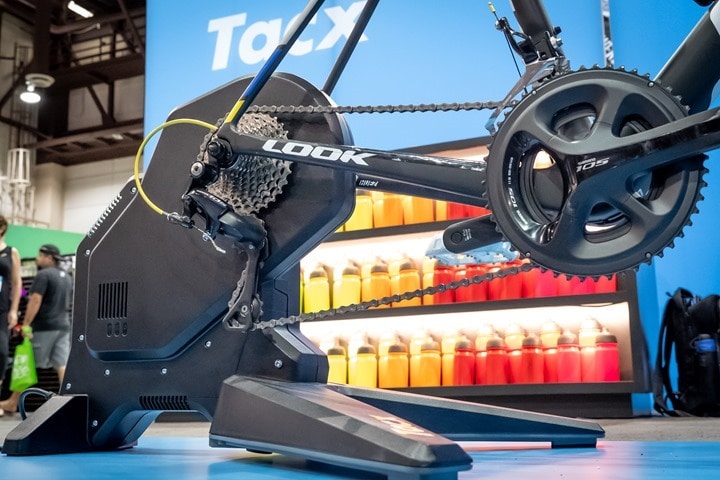
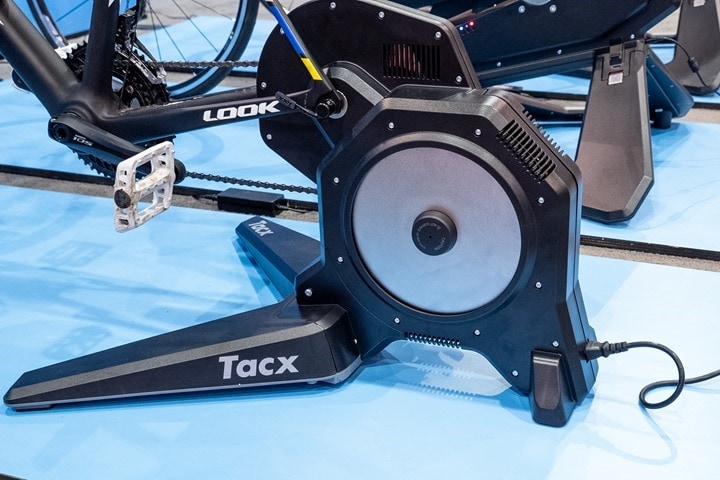
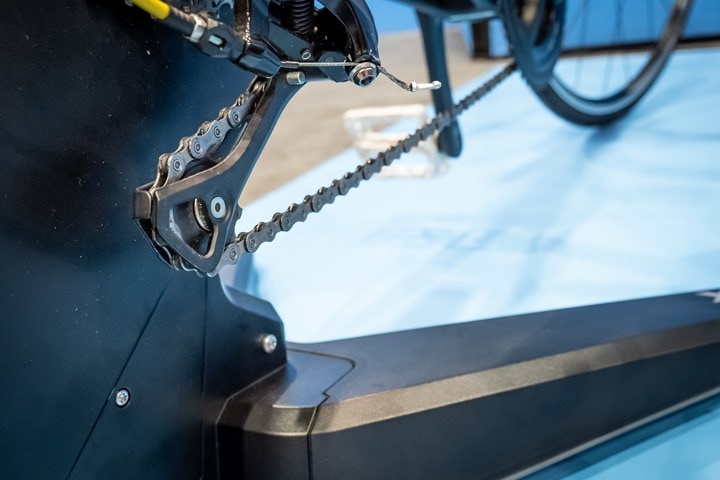
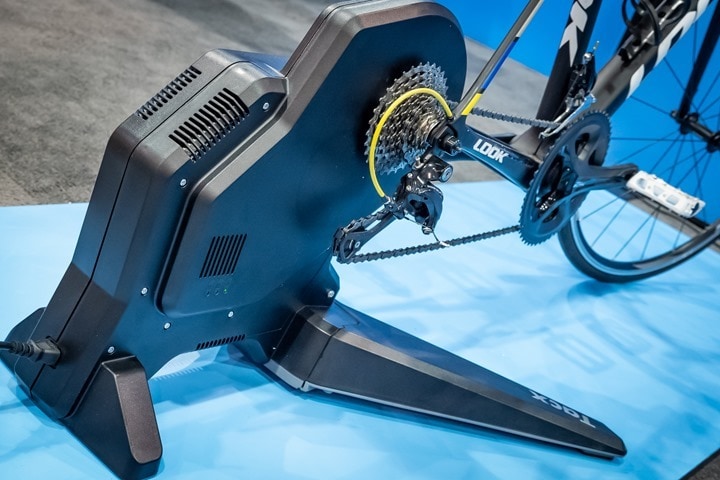
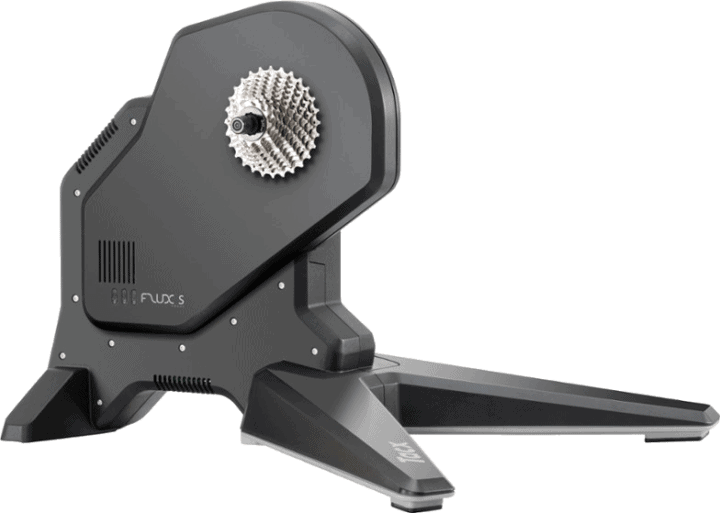





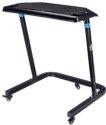

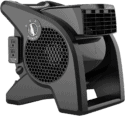
























Is the price of the flux S and flux 2 in EUR really the same?
No, the Flux 2 in Euros is 799EUR, versus the Flux S is 599EUR. Tweaked the table. Thanks!
Thanks for the news Ray.
Honestly… I’m very very confused right now! I want to replace my tacx flow smart but with Flux 2, Flux S, Core and Directo but i’m having troubles deciding for one. The ability to simulate low-speed climbs it’s important for me, but the almost 200€ difference between Core / Flux 2 and Flux S it’s a lot of money.
Also i read so many people with problems with the flux 1, that i’m a little afraid of buying one.
The slow climbs has to be clarified.
If you want to ride steep hard climbs and you are putting out power going up them, working hard, then either should be fine.
The difference is when riding steeper stuff in too high of a gear and the trainer can’t lower resistance far enough to reach that low wattage. The Flux 2 will allow you to reach lower wattages per gear than the S.
So if you’re worried about steep stuff at very low effort, then get the 2. If you want to ride steep and hard then anything will be fine.
How does that compare to slow climbs on the Kickr 2018 and Kickr Core? We have very steep (“punchy”) climbs that I’d like to train for over the coming winter.
Define low effort vs hard effort. I’m sure some people might think anything under 200 watts isn’t a hard effort.
Plus it is not really related to how hard your pushing anyway. The limit is with how much resistance can be applied to the flywheel when the flywheel is at a low speed. This is why in erg mode its better to have the bike in the big ring with a smaller cog. So a better clarification is a x speed what is the minimum wattage it can give resistance to.
So the first look on the first “Look” bike on the Tacx Flux S …
😉
Ironically, the higher power capacity of the Flux 2 won’t be the draw but rather the lower power floor for some users.
Yup, likely.
But at the same time, I kinda want to actually ride it a bit side by side and see how it all handles in real-life.
Love the competition – – keep these prices a-fallin’
Thanks for the alert Ray.
At the risk of going a bit OT, any more info from Tacx about a European release date for the Neo Smart Bike? Badly broke my leg a couple of weeks back and it’s likely to be 6-9 months before I’m back in the saddle, but consultant reckons I could be up to some very low power indoor bike training by Christmas which gives me the perfect excuse I needed 🙂 but Tacx seem to have gone very quiet…
Current plan as of last week is late November for European shipments to start, which means realistically another 4-5 weeks until US shipments happen, assuming they go with seabound cargo containers (which is likely).
Personally, I think that Tacx probably needs to suck it up and pay for air freight for those initial units to the US, in order to at least keep those early pre-orders within 2018. Other trainer companies have done the same in the past when facing delays.
Thanks Ray.
I just ordered the S after reading this – free shipping. Will be here Thursday.
So, unless you have a long mech Flux S = Flux 1.
For those in the UK, you may be interested to know that Halfords (not previously known for their competitive pricing) have the Flux 1 trainer for £450.
link to halfords.com
If you are a British Cycling member, you can take another 10% off that by doing a “click and collect” and paying in the store. So, Flux 1 for £405.
I’d call that a bargain.
I was going to get the Kickr Core, but I have to say, I’m struggling to see the value in the extra £300 over the Flux 1! I need to try and see how loud the Flux 1. Is it louder than the drive train or fan?
I’ve just got the Tacx 1 for exactly the reason that I couldn’t justify the extra £300 for the Kickr.
I’m pleasantly surprised about how quiet it is, cf my wheel-on magnetic turbo of old. I did notice my gear changes had gone a little out of alignment and I noticed because I heard the chain not sitting perfectly. I wouldn’t have heard that previously.
For £300, I can just turn up a TV an extra notch 🙂
@Colin to be fair if you look at pricing in Halfords they are pretty good these days. Almost always cheapest prices for Garmin computers for instance and usually in stock locally too, which is always nice for us impatient types.
That said, there’s something in my brain that’s hard wired to look at Halfords as a very last resort. Probably why Cycle Republic exists as a second less hated brand 🙂
I’m so torn. I need somewhere with a Flux on demo so I can hear it in action.
I’m almost going for this deal (and considering a British Cycling membership to get hold of the discount).
Regarding the long mech. I can’t work out whether this applies to many road bike users or not. I have bikes with 32 cassette and therefore what Shimano call a medium cage (105 rear mech and a ultegra di2). Does this fall under “long mech” which won’t work on the Flux 1? Anyone have any experience either way?
Yes it does. Medium cages here across the board (5800 & 6800) including my Turbo bike and the cage hits my Flux 1 (early 2018 version). It’s not caused me any issues as it’s only at the absolute lowest (the 28T on my turbo cassette) that it hits. My RD still changes but get some chain rub so just avoid using that sprocket.
Have probably done ~1500 miles on Zwift with it like that.
I’m not sure how much British Cycling membership is, to get 10% off at Halfords, but I get 15% off due to being part of the Subaru Owners Club. Came in handy when I bought a couple of Neo’s for myself and the wife. 🙂
Hi Ray, Thanks for this but still a bit confused.
Anyway, the flux 1 now retails for 549 euro in most shops in the Netherlands which is still 50 euro cheaper than the Flux S would be.
I would be inclined to chose the Flux 1 if the only difference is the long case/different legs point
Yeah, I agree, I wouldn’t fret about it in that case. Physically the only difference between a late-model Flux 1 (made from spring onwards) and a Flux S is the leg.
Now, figuring out how long that Flux 1 has been sitting on the shelf is an entirely different story…
I guess there will be no easy way to check this once received by a build number of some sorts
Unfortunately not. Honestly, for the $50 I’d probably just spend it and call it ‘insurance I got this years model money’. Sorta like overpaying in a sketchy city to use the hotel car service so that you don’t get taken for a ride by a bad taxi driver.
Do you know what model number this correlates to (ie for a flux1 made from spring onwards)?
I don’t believe they changed anything in the model numbers for the spring change, but I’ll check.
There’s a Flux owners group on FB which did have a link to a large Google doc where people put in their serial numbers, purchase dates and if they’d suffered from the belt issue of the earlier Flux’s. You could use it as a ‘guide’ on how likely the Flux was to suffer from the manufacturing/QC issues that many earlier ones did. Although I couldn’t find the doc easily last time I looked there (I didn’t look very hard).
Know someone who bought a Flux less than 2 months ago and had the ‘same’ belt issue that the earlier Flux’s suffered from. It could’ve been old stock at a retailer (he returned for a refund and went with a Neo), as we never checked his serial number against the doc.
no mention of how unreliable they are or any mention of if they have fixed that issue?
I’m on my second Flux and about to return it as it’s faulty (in less than 8mths).
And I’m not the only one having issues.
I mentioned the early Flux QA issues in the post. At this point though, I’m honestly not seeing any data that shows it’s any more or less reliable than any other trainer on the market. All products (trainers or iPhones) have some level of defect rate, but it doesn’t seem any different here.
To me, “lower resistance floor” means, rides can be done at lower power demands. Recovery from injury, beginner cyclist, etc. Good thing.
Per your post: “And finally, the Flux 2 has a lower resistance floor, so it can better simulate low-speed climbs than the Flux S.” This would indicate higher power dissipation trainer capability at lower speeds. Good thing as well.
Which is correct?
Technically both. 🙂
Somewhere I’ve got a nifty graphic/chart/graph that shows it all. Will try and find it.
Thanks, Ray!
A chart would be awesome. Seems much misconception about “resistance floor” on my side.
My naive thiniking (tax neo excluded), simplified:
– low end is controlled by mechanical inertia. Just to turn the inertia, power is needed and in big gears, can’t go below certain power, need to downshift.
– On the opposite side, in low gears, low energy is dissipated by inertia wheel, low speed, most needs to be dissipated by electronics. Hence the slope % marketing term. Interestingly, this simulation might be affected by rider weight? Is there standard cross trainers?
Anyways, great work to keep the industry straight an the community educated and in shape!
Best
Pleased to see this supports long cages – any idea whether this will support QR 141 Boost rear hubs, which is what my bike seems to have, and seems to be getting released by a few manufacturers?
Hey Folks-
Update: You can now place a pre-order for the Tacx Flux S with Clever Training. In doing so you help support the site, but more importantly you can save 10% via Clever Training with DCR Coupon Code DCR10BTF, plus you’ll get free US shipping. Delivery is expected in late October.
As an interesting note however, the Elite Direto is also down to very similiar price of $765, and ships essentially same day versus a month from now. Spec-wise these two are very very similiar. Accuracy wise a very slight edge to the Direto, as well as functionality in terms of being able to fold up and properly supporting FTMS. Sound-wise it’s a wash. Anyway, that link is here: link to clevertraining.com
Enjoy!
As usual, thanks Ray! Trying to decide between the Core, Direto II or the Flux 2 before we are forced indoors for the bulk of the seaons rides. Will your 18-19 Bike Trainers guide be out soon to help break all of the confusion/ties out there?
Would also be curious about any support related issues for the Tacx and Elite for US based consumers.
Yeah, I’m trying to decide between pushing it sooner (within the next two weeks), or waiting a couple weeks to see what the Flux S looks like.
Just wondering if it would be possible for me to put Flux s legs on my Flux 1? Recently switch ef to á long Cage without realizing it would mess with my trainer… :/
As seen in the pictures below, not only the legs are different on the Flux S. the casing at the front also differs to the Flux 1. They probably had to make it higher to even off the lowering of the legs.
So how does Tacx get away with “The most silent flywheel equipped bike trainer available.” written on their site while the Kickr 2018 continues to exist?
Maybe they’re talking about the Tacx Neo?
Appears on their page for the flux and does not appear on the page about the Neo, so it’s not just a copy/paste error.
Weird. Yeah, no basis for that. I’ll bring it up.
Updated thought: My bet is that it’s a copy/paste error in a different way: Duplicating the original Flux page, which came from the pre-Wahoo 2018 era.
Ray,
Is it possible for you to say which would be less noisy – Tacx FluxS or Elite Kura? Given that Elite Kura has the fluid based resistance maybe it would be more appropriate if the workout place is the flat. Of course, all the features provided by the smart functions is the huge temptation but the good relationships with the neighbors can’t be ignored.
Thanks in advance!
Hmm, that’s tough. I haven’t ridden a Kura in a long while and don’t have one on-hand either.
My guess off-hand is that they honestly aren’t that much different.
Hello Ray.
Thank you for blog!
End of October. Shipping delay of FLUX S already for three weeks (according to bikediscount.de). So I guess there are no chance to read your thoughts until of November 23?
You’ll see my full in-depth review tomorrow on it. 🙂
I haven’t heard of any shipping delay from them.
Hi Ray
firstly just love these reviews and particularly now i am following you on Youtube (Smart TV upgrade ;-D)..
question on the turbos, i have the original Bkool Smart (2013) its generally okay however i would like bluetooth and more stability (its actually not so bad at the 250W level i ride compared to my P1 pedals) .. in your trainer reviews there does not seem to be much around the trainers stability out of saddle or sprints.. is that cos they are all much the same or just not the priority (watts accuracy and noise being the priority ?)
Looking at sub £800 from elite (direto) , wahoo (Kickr & core) and Tacx (flux s & 2) – do you have a view on which has the best stability and the nuiances of how each behaves when not able to say hit a wattage goal or low cadence…
Hey Tim – Check out my just posted trainer guide: link to dcrainmaker.com
Fourth picture: man, you really need to buy a derailleur cable cutter! lol
It’s just a bike a trade show, not mine.
Ray,
My big concern with the TacX FluxS is the 10% max gradient, that seems a bit low. I realize Zwift has this set to 50% by default, but should this be a big concern? I can’t find any real discussions o this online. Is this a number like max wattage that I should not be putting much thought into. Truthfully I can hold more than about 1200W for more than a few seconds. I can climb 15%+ grades but they take everything out of me!
Thanks,
Greg
Hi, any news on when you’ll be able to do an in-depth review on the flux 2?
Thanks
Sometime early next week I’m hoping to release it. Maybe the end of this week if I get unexpectedly ambitious.
I’ve had this trainer for approx 2 weeks.
The first issue was assembly: only one screw will actually tighten, the other won’t, I’ve attempted switching the screws and removing the plastic cover and it makes no difference. The threading appears to not be aligned with the angle of the screw.
I have the exact same malfunction indicated sound that DCRAINMAKER has in his video.
Perhaps I have an older machine, however the box has TACX a Garmin Company on it, which I thinks corresponds to the time frame of early this year/late last year and DCRAINMAKER saying that new quality control procedues will now be put in place is prior to this.
This thus begs the question whether there are indeed any “new quality control measures”, and with the screw alignment issue what “quality control” methods Tacx use as standard already.
I’ve just filmed these two issues which I expect Tacx will want when I try contacting them tomorrow. I will update this with the video links and with the progress that Tacx support provides….. I am not looking forward to this.
S L l